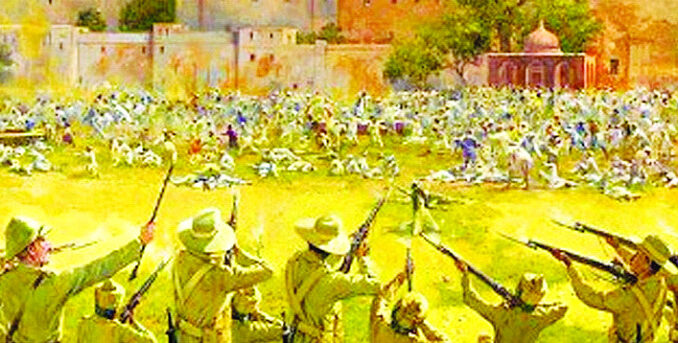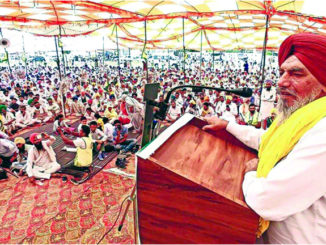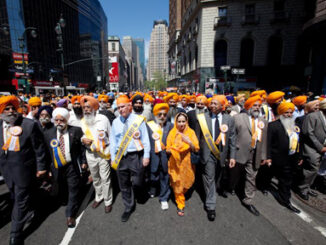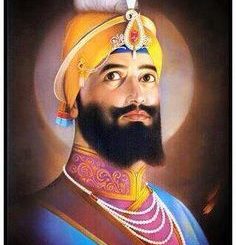
April 13, 1919, marked a turning point in the Indian freedom struggle. It was Vaisakhi that day, a harvest festival popular in Punjab and parts of north India. Residents of Amritsar decided to assemble at Jallianwalla Bagh on the day to discuss the confinement of Satya Pal and Saifuddin Kitchlew, two leaders fighting for Independence and scrapping of the Rowlatt Act, which armed the British government with powers to detain any person without trial.
The crowd had a mix of men, women and children and the protest was a peaceful one. The gathering included pilgrims visiting the Golden Temple who were merely passing through the park, and some who had not come to protest. Suddenly, as many as 90 British Indian Army soldiers, commanded by Colonel Reginald Dyer, appeared and without any warning to the people, ordered firing on the completely peaceful and defenceless crowd. The fusillade continued till Dyer’s ammunition ran out.
This cold-blooded carnage, Dyer admitted later, was perpetrated “to strike terror not only in the city of Amritsar, but throughout the Punjab”. The official inquiry ordered by the British government said there were 379 deaths but the Congress claimed that more than 1,000 people died in the massacre.
A well, located inside the premises of the Jallianwala Bagh, stands testimony to the brutal killings of the innocent who jumped into it in panic to save themselves from the firing. 120 dead bodies were later recovered from the well. The last known survivor of the Jallianwala Bagh Massacre, Shingara Singh, died in Amritsar on June 29, 2009, at the age of 113.
The massacre marks one of the most heinous political crimes committed by the Britishers during the twentieth century. It became a turning point in the history of India’s struggle for freedom. The Jallianwala Bagh site in Amritsar is now a national monument. It houses a museum, a gallery, and a number of memorial structures.
Popular resentment had been accumulating in Punjab since the beginning of the War (World War I), mainly due to the ruthless drive – by the British — for recruiting soldiers and forced contribution to the war fund. Gandhiji’s call for a country-wide hartal to protest against the Black Acts received a tremendous response from Punjab on March 30 and again on April 6.
Gandhiji’s call for a country-wide hartal to protest against the Black Acts received a tremendous response from Punjab on March 30 and again on April 6.
The agitated mood of the people and Hindu-Muslim solidarity demonstrated on the hartal (strike) days and on April 9 celebration of the Ramnavami festival made the Lt Governor Michael O’Dwyer’s administration panicky.
Gandhiji’s entry into Punjab was banned: two popular leaders of Amritsar, Kitchlew and Satya Pal, were arrested. These provocations led to hartals and mass demonstrations in Lahore, Kasur, Gujranwala and Amritsar.
In Amritsar, the police firing on demonstrators provoked some of them to commit acts of violence. The next day the city was handed over to Brigadier-General Dyer. Dyer began his regime through indiscriminate arrests and ban on meeting and gatherings.
On April 13 – the day of Vaisakhi festival – a meeting was called in the afternoon at the Jallianwala Bagh a ground enclosed on all sides. Thousands of people, many of whom had come from surrounding villages to the fairs in Amritsar and were unaware of the ban order, gathered in the meeting.
Suddenly Dyer appeared there with troops and without any warning to the people, ordered firing on the completely peaceful and defenceless crowd. The fusillade continued till Dyer’s ammunition ran out. Atleast about a thousand people, if not more, are estimated to have been killed. This cold-blooded carnage, Dyer admitted later, was perpetrated “to strike terror not only in the city of Amritsar, but throughout the Punjab?”
The massacre stunned the people and became a turning point in the history of India’s struggle for freedom. Rabindranath Tagore wrote a strong letter of protest to the Viceroy, dated May 31, 1919, renouncing his Knighthood
“….The disproportionate severity of the punishments inflicted upon the unfortunate people and the methods of carrying them out, we are convinced, are without parallel in the history of civilised governments…. The accounts of insults and sufferings undergone by our brothers in the Punjab have trickled through the gagged silence, reaching every corner of India and the universal agony of indignation roused in the hearts of our people has been ignored by our rulers,-possibly congratulating themselves for what they imagine as salutary lessons….the very least that I can do for my country is to take all consequences upon myself in giving voice to the protest of the millions of my countrymen, surprised into a dumb anguish of terror. The time has come when the badges of honour make our shame glaring in their incongruous context of humiliation, and I for my part wish to stand shorn of all special distinctions, by the side of those of my countrymen, who, for their so called insignificance, are liable to suffer a degradation not fit for human beings….”
The Hunter Committee
The Hunter Committee was appointed by the British government. Halfway through its proceedings, the Hunter Committee suffered the setback of being boycotted by Indian nationalists, represented by the Congress, because of the government’s refusal to release Punjab leaders on bail.
Of the eight members in all, the Committee had three Indian members. The conduct of the Indian members is a study in principled independence and courage.
The following erudite exchange on the pointed killings ordered by Dyer on April 13, 1919 took place during the hearings of the Hunter Committee that took place in Lahore on November 19, 1919.
The excerpt that follows was part of a detailed and rigorous cross examination of General Dyer. Sir Chimanlal Setalvad, a lawyer from Bharuch, Gujarat, who lived in Bombay conducted this particular part of the cross-examination.
Chimanlal Setalvad: “You took two armoured cars with you?”
Dyer: “Yes.”
Chimanlal Setalvad: “Those cars had machine guns?”
Dyer: “Yes.”
Chimanlal Setalvad: “And when you took them you meant to use the machine guns against the crowd, did you?”
Dyer: “If necessary. If the necessity arose, and I was attacked, or anything else like that, I presume I would have used them.”
Chimanlal Setalvad: “When you arrived there you were not able to take the armoured cars in because the passage was too narrow?”
Dyer: “Yes.”
Chimanlal Setalvad: “Supposing the passage was sufficient to allow the armoured cars to go in, would you have opened fire with the machine guns?”
Dyer: “I think, probably, yes.”
Chimanlal Setalvad: “In that case the casualties would have been very much higher?”
Dyer: “Yes.”
Chimanlal Setalvad: “And you did not open fire with the machine guns simply by the accident of the armoured cars not being able to get in?”
Dyer: “I have answered you. I have said that if they had been there the probability is that I would have opened fire with them.”
Chimanlal Setalvad: “With the machine guns straight?”
Dyer: “With the machine guns.”
Chimanlal Setalvad: “I take it that your idea in taking that action was to strike terror?”
Dyer: “Call it what you like. I was going to punish them. My idea from the military point of view was to make a wide impression.”
Chimanlal Setalvad: “To strike terror not only in the city of Amritsar, but throughout the Punjab?”
Dyer: “Yes, throughout the Punjab. I wanted to reduce their morale; the morale of the rebels.”
Chimanlal Setalvad: “Did it occur to you that by adopting this method of ‘frightfulness’ – excuse the term – you were really doing a great disservice to the British Raj by driving discontent deep?”
Dyer: “I did not like the idea of doing it, but I also realised that it was the only means of saving life and that any reasonable man with justice in his mind would realise that I had done the right thing; it was a merciful though horrible act and they ought to be thankful to me for doing it. I thought I would be doing a jolly lot of good and they would realise that they were not to be wicked.”
Setalvad’s cross examination followed Lord Hunter’s and that of one more British member. Dyer had already admitted to Lord Hunter that although “a good many” in the crowd might not have heard of his ban on the public meeting, he had ordered the firing at Jallianwala Bagh without giving any warning. He went further when he said before the Committee that, although he could have “dispersed them perhaps even without firing”. He felt it was his “duty to go on firing until (the crowd) dispersed”.
An eight-member committee headed by Lord William Hunter, former solicitor general in Scotland constituted the Inquiry Committee. Apart from Setalvad, then Vice Chancellor, Bombay University, two other Indians were part of the Committee. Sir Chimanlal Setalvad, Pandit Jagat Narain, Member of the Legislative Council of the Lt. Governor of U.P. and Sultan Ahmed Khan, Member for Appeals, Gwalior State.
Lord Hunter, Justice Rankin and WF Rice, Add. Secretary to the Government of India, Home Department, Major-General Sir George Barrow, Commanding the Peshawar Dn and Smith, Member of the Legislative Council of the Lt. Governor of UP were the members. The questioning was done, in turn, by eight members.
Following up on the admissions by Dyer to the two British members before him, Setalvad probed Dyer on the two armoured cars that he had been forced to leave out. Dyer’s callousness stood exposed: even after the firing had left almost 400 dead and many more injured, when asked by Setalvad if he had taken any measures for the relief of the wounded, Dyer replied, ‘‘No, certainly not. It was not my job. But the hospitals were open and the medical officers were there. The wounded only had to apply for help.” All three Indian members of the Hunter Committee displayed a remarkable degree of independence faced with sharp differences with the British members. The differences arose over the recording of conclusions.
The Hunter Committee ended up giving two reports – the majority report by the five British members and the minority report by three Indian members.
Both reports indicted Dyer, in no uncertain terms. The differences were in in the degree of condemnation, in so far as Jallianwala Bagh was concerned.
The report by the British members’ report condemned the action by Dyer on two counts: that he opened fire without warning and that he went on firing after the crowd had ‘begun to disperse’. Though his intention to create a moral effect throughout Punjab was ‘a mistaken conception of duty’, the British members thought it was “distinctly improbable that the crowd would have dispersed without being fired on”. Even the British members of the Hunter Committee, rejected the official stand that Dyer’s action had ‘saved the situation in the Punjab and averted a rebellion on a scale similar to the (1857) mutiny’.
The minority report, drafted by Chimanlal Setalvad, on behalf of all the Indian members was not only more severe in general. It specifically condemned Dyer for “suggesting that he would have made use of machine guns if they could have been brought into action.” Members expressed strong anguish at the fact that even after the crowd had begun to disperse, Dyer had continued the firing “until his ammunition was spent.”
Citing Dyer’s own admission in cross examination, the Indians disagreed with the opinion expressed by the British members of the Committee that the crowd was unlikely to have dispersed without the firing. In conclusion, the Indian members of the Hunter Committee described Dyer’s conduct ‘as inhuman and un-British and as having caused great disservice to British rule in India’.
Faced with both reports, the then Viceroy of India, Chelmsford conceded that Dyer “acted beyond the necessity of the case, beyond what any reasonable man could have thought to be necessary, and that he did not act with as much humanity as the case permitted”. Dyer had no option but to resign and return to England in disgrace.
Apologists for the Raj in Britain however, bought into Dyer’s claim that it was this bloody firing by Dyer that had saved the Raj in India. This not only reduced the punishment meted out to Dyer, he was also treated as some sort of a hero on his return. In fact, the inquiry itself could only be instituted only after an indemnity law had been passed protecting Dyer and other recalcitrant officers from criminal liability.
Setalvad had been knighted by the British monarch, just a few months before the Jallianwala Bagh inquiry. He was then vice-chancellor of Bombay University. In his memoirs published in 1946, Recollections and Reflections, Setalvad disclosed that within the British and Indian members of the Hunter Committee had developed “a sharp cleavage of opinion”.





Be the first to comment